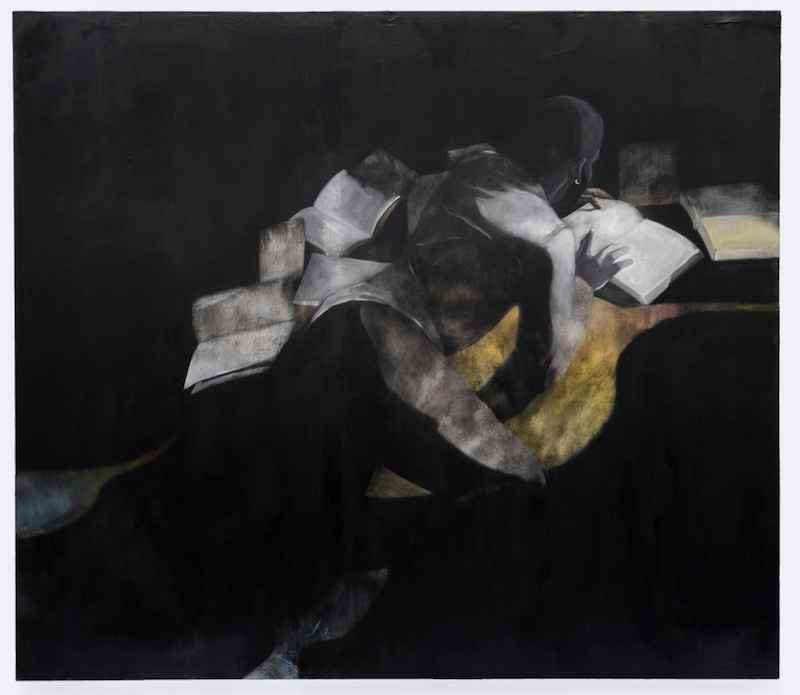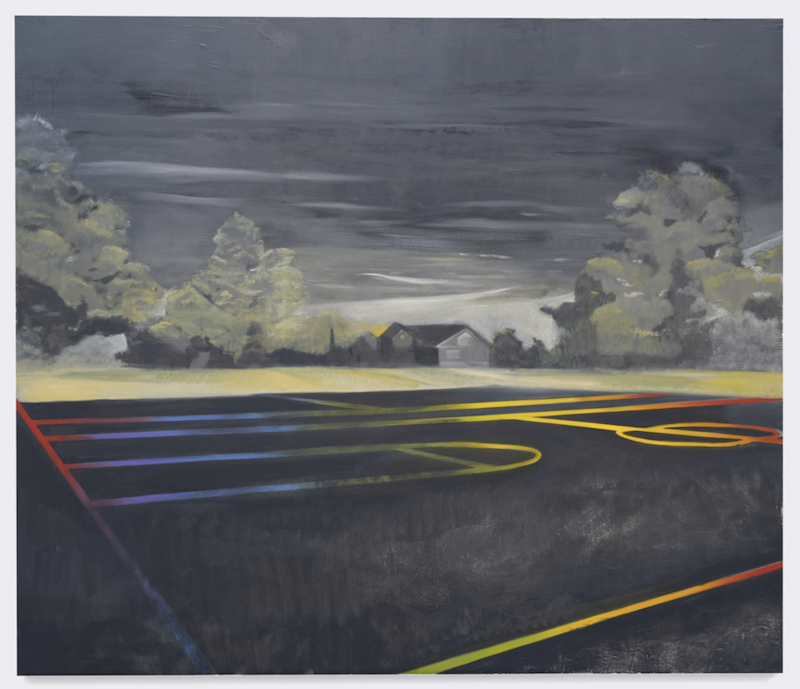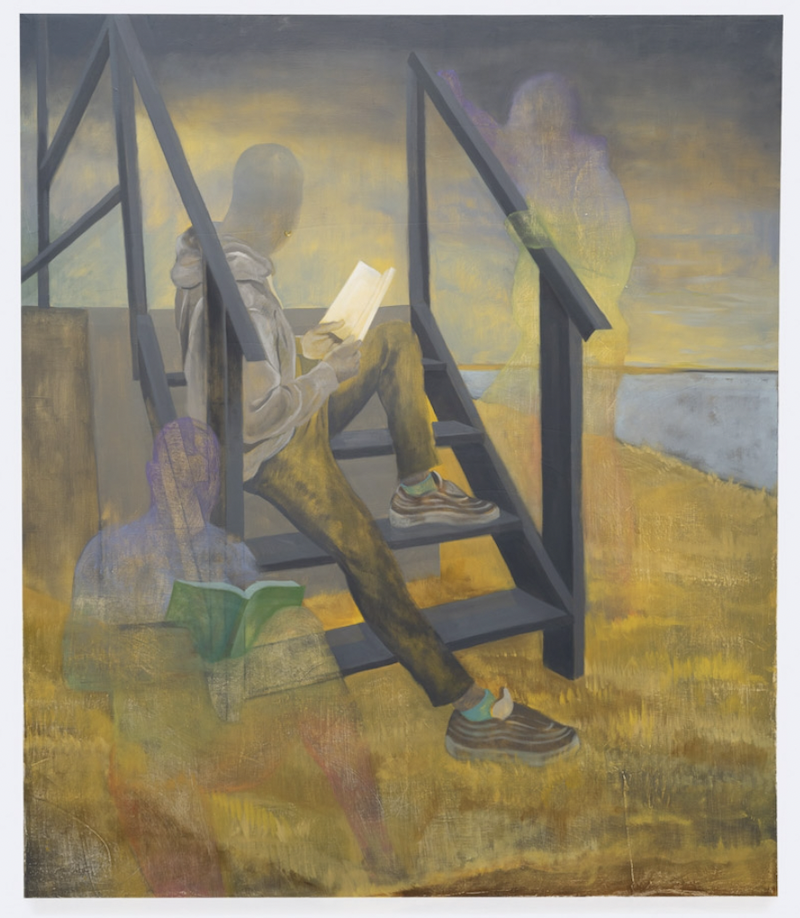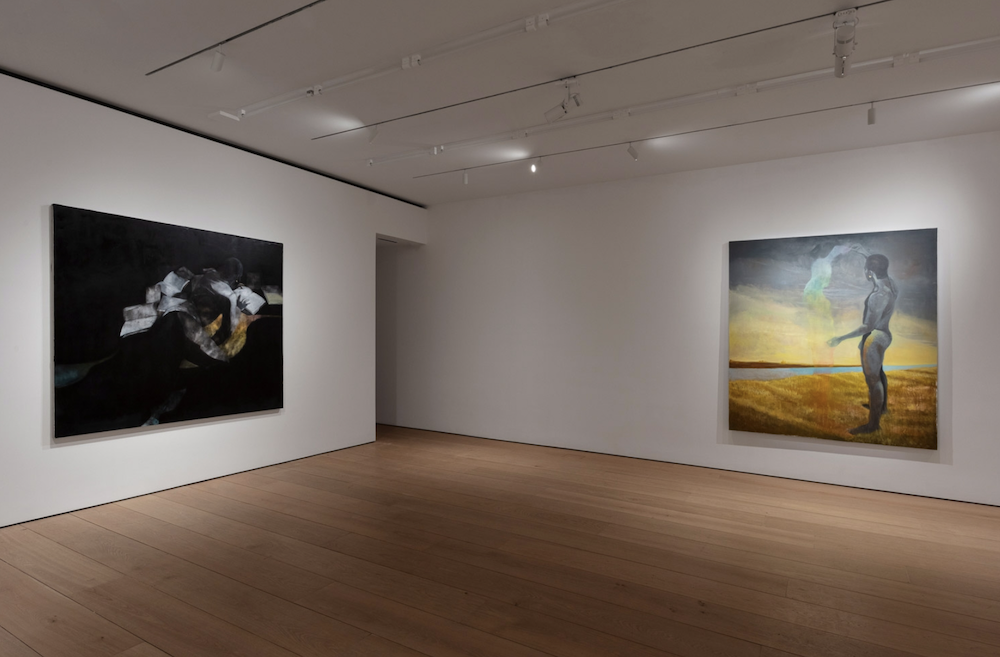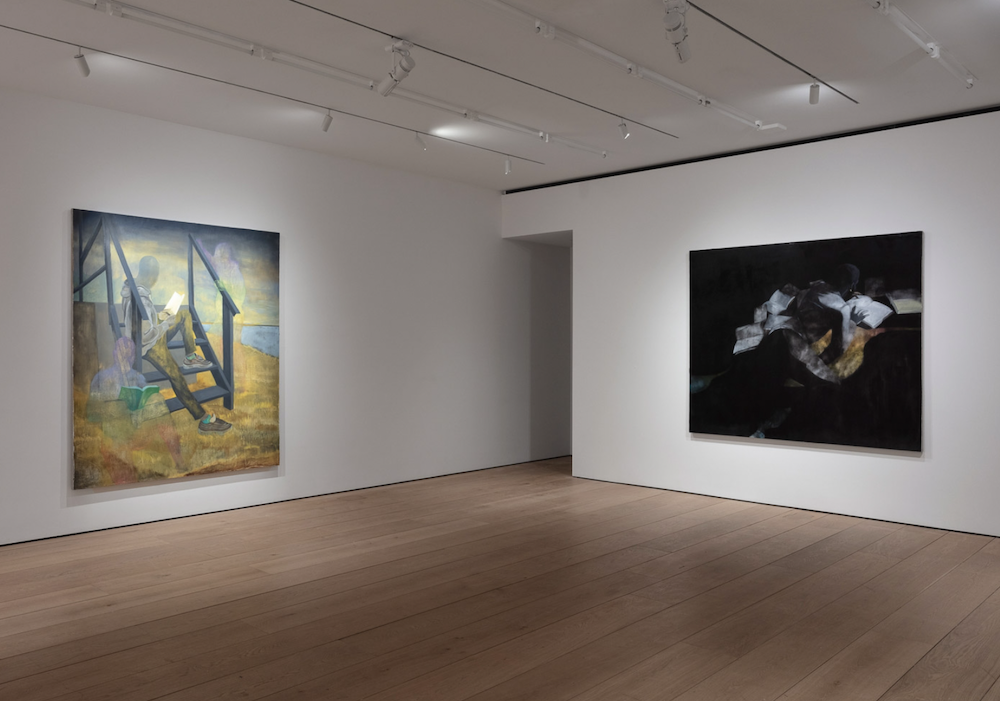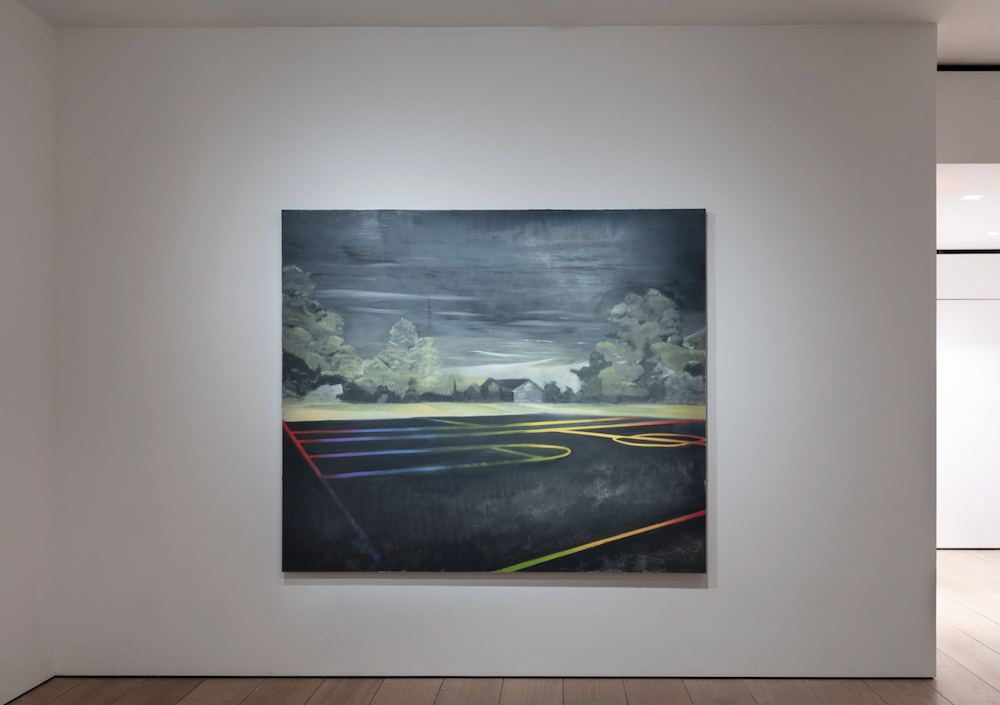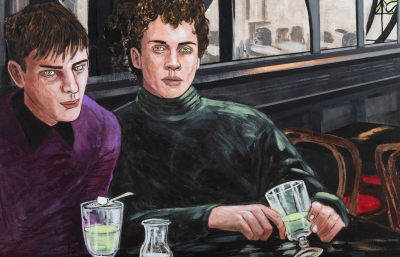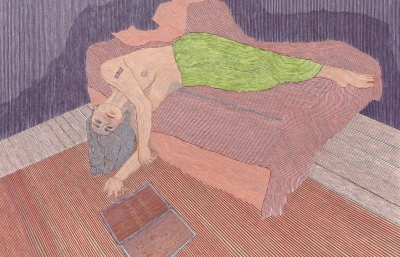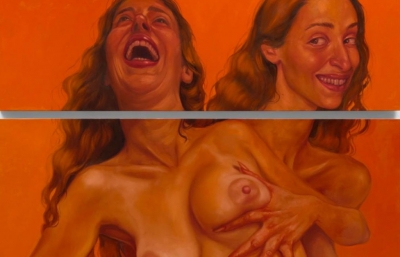"I also knew that I was hungry, I knew I was just willing to work at a different level," Dominic Chambers told us in a Fall 2020 feature. "I was willing to work and have a different approach to it. Because I was trying to figure it all out! I think a lot about Kerry James Marshall and how he considers things in very strategic terms. And that's how I approach it, bringing a degree of self awareness and mental clarity to my practice." Nearly two years later, that line feels prophetic, because his newest body of work, Soft Shadows, there seems to be so much clarity in the hazy portraits and landscapes, a sense of an artist finding a new texture to his already freshly escapist work.
It seems apt to mention that Chambers is also a writer, as his work has an obvious literary quality to it. As the gallery notes, "Fundamentally interested in how art can function as a mechanism for understanding, recontextualizing, or renegotiating one’s relationship to the world, Chambers sees painting as a critical and intellectual endeavor as much as an aesthetic one. Recent series have focused on representations of Black leisure, with Chambers depicting many of his subjects reading or lost in thought, their gaze fixed far outside the frame." Each subject seems to be in a pose of learning or reading, as if they are involved in the process of understanding the works and context they are presented as. The viewer, too, becomes involved in the reading.
The gallery continues, "Throughout the series he makes overt reference to iconic paintings from across art history, reinvigorating and reinterpreting some of its most famous images with particular attention to the racialized connotations of illumination. Taken together, the Shadow Work paintings represent the most recent development in the artist's profound interest in the interrogation of art history and his rigorous exploration of color theory and its relationship to race." This is the path that Chambers was on as a young painter at Yale, and he seems to be hitting a marvelous stride as his representation at Lehmann Maupin begins. An artist to watch, but we already knew that. —Evan Pricco



